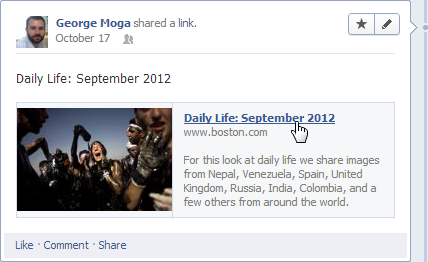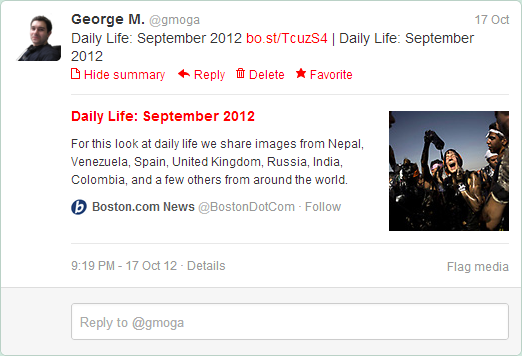There has been a lot of controversy lately around the changes Twitter made to the API rules, practically restricting what developers can and can’t do with the data. Compared to other ‘walled gardens’ they may not seem that bad, only compared to the relative freedom from a couple of months ago. The way I see it, Twitter is trying to steer its business and app ecosystem in a similar direction to Facebook, the only difference being one of perception. Facebook was always considered ‘closed’ and hasn’t really encouraged third-party apps to display the stream; that was in any case much harder because of the data complexity, with several stories types and numerous layers of privacy settings. On the other hand Twitter was viewed as ‘open’ – even though it’s not; it was probably a misperception of the public nature and the simplicity of the network. On a related note, it’s interesting how every now and then a start-up proclaimed itself the open alternative to Facebook; but only this year we have a start-up (app.net) making the same claim for Twitter.
There are many clues to this slow transformation. Aside from the API changes, the new Twitter Cards are probably the biggest give-away: Facebook had rich previews of the shared content for as long as I remember – they provide a more diverse experience and decrease the need for users to navigate away from the site. Twitter Cards have basically the same role – they even use the same OpenGraph markup – showing a snippet and thumbnails for shared links or allowing you to play videos without going to the original site. The new appearance of tweets on the web is similar to Facebook, with the number of likes/retweets on the bottom; Twitter also started showing replies inline, matching the look of Facebook comments. Heck, even the new profiles resemble Facebook’s Timeline with a large, banner-like background photo.


Other more subtle signs are increasing the number of emails sent to users – now we have recommended users, recommended stories, as well as activity notifications – and the ‘personalization’ that tracks your visits across all websites where Twitter buttons are present and was silently enabled by default without user consent – sounds familiar? All are signs that Twitter is trying to increase engagement for regular users and to ease the learning curve for newcomers, all at the cost of some unhappy developers and grudging power-users who can no longer use their shiny Twitter clients. This strategy is somewhat ironic: Twitter, who has always been strong on mobile and more distributed, is shifting towards Facebook’s strategy, while Facebook is starting to chase mobile users, after neglecting them in the past.
Personally I am not at all affected by the restrictions to the third-party clients and I suspect most users won’t feel much difference. I have never been a fan of desktop clients because opening links takes you out of the client into the browser, making you switch back-and-forth between them. After brizzly closed and the team moved on to other projects, I started using TweetDeck on the web, which is likely to be around for a while because it’s now owned by Twitter – I just wish they would also update the mobile app at some point. I don’t expect independent third-party clients to be around for much longer, regardless of the ridiculous prices they charge for a user account. I think people who are paying those prices are just holding on to false hopes, postponing the inevitable moment when the app will be shut down; it would be better just to let the developers and the company move on to other projects and diversify, so that further changes to Twitter’s policy won’t affect them as much.
If you think about it, developers of Twitter clients are in a similar situation to Zynga on Facebook: they built their business and reputation on an insecure ground, under the assumption that the current rules will remain unchanged. But at some point, the business interests of Twitter and Facebook respectively have shifted, leaving some partners behind. Twitter want to grow its advertising business and it can’t afford other apps competing for attention; similarly Facebook is de-emphasizing games in the stream to reduce the noise and promote its growing array of services (gifts, promoted posts, etc.) As usual, there is fierce competition in the tech world, more intense than in other business areas, and smaller players need to adapt or face extinction.
Post a Comment